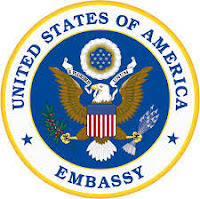7 Tips on How to Secure Admission into Canadian Universities
Post written by Samuel Osho
In a world that is constantly moving and in active search of knowledge,
individuals are no longer satiated with the taste of a first degree. Everyone
wants to make advancement along career paths and acquire more educational
degrees. Canada is one of the hunting grounds for excellent experience when it
comes to graduate studies due to many reasons. For many, securing admissions to
some of the top universities with an assurance of a full scholarship is a
herculean task and one that requires diligence and dedication. That's right!
These are some steps and tips that can help to ease the stress and steady your
hands on the steering wheel as you kick-start this journey.
Step 1:
The world is filled with amazing opportunities and that is why it is
imperative for you to know what exactly you are looking for. Knowing the title
of the course and your proposed area of specialization is the first point of
call. The next move will be to embark on the look-out for where you can get
what you want.
Step 2:
Deliberate and rigorous research on
the list of best universities that offer the courses that tickle your interest
will be your next adventure. Pick the best two universities based on factors
such as the possibility of getting
scholarship/funding, the quality of your undergraduate results and the
opportunities available for an industrial experience in the city.
Helpful tools are:
Step 3:
This is the time to get to work. Craft a persuasive Statement of Purpose
(SOP). Tips include: use a simple language, be clear in your expressions, avoid
using long sentences, use active tenses, be direct and go straight to the
point. This is an opportunity for the reader (a potential supervisor) to meet
you for the first time - give an excellent impression of your personality in a short period of time. Avoid irrelevancies
and flowery words. Don't take credits for whatever you did not do, don't tell
lies and don't include statements about yourself that you cannot defend.
Consult the following resources:
Step 4:
Pay a visit to the departmental website of your chosen course, look for
lecturers that are spearheading research works in your area of interest. Send
the SOP to their respective email addresses and attach some regular documents
such as your transcript and resume. If you don't get a response in four days,
you can attempt placing a call to their Office phones or send the email
again.
Step 5:
If you get a response from a Professor and he/she is willing to take you
in as a student. Congrats! You have successfully secured an advisor. You can go
ahead to make inquiries from the Professor if it is possible to be a
beneficiary of a research funding and work with him as a research assistant.
This implies that if you get a positive response as regards the funding, you
will be required to work with your supervisor on a specified research
topic.
Step 6:
If you can fund your program with your purse, you can commence the application
process on the university portal since you have an advisor. This may also be
the time for you to start searching for scholarships either from the school or
ones funded by international bodies. With scholarships or self-funding, you can
dictate the type of research topic you want to do under the supervision of your
advisor.
Step 7:
When the admission is secured and you have been issued your admission
letter, you can start the application for a VISA. Conduct solid research on how
to apply for visas, endeavor to pay attention to all instructions and provide
all the required documents as specified in the brochure.
Tips and Misconceptions:
- As against the rules in the US, not all Canadian universities
require English proficiency tests from all nationalities. During your
background check before concluding on your applications to the two
universities, go to the list of countries exempted from doing the
proficiency tests. For instance, if you are a graduate from Nigeria, you
don't need an English proficiency test to gain admission into the
University of Manitoba (U of M) for graduate studies. Nigeria is on the
exemption list on the U of M's website.
- Start as early as possible and be well-acquainted with the
deadlines for the Winter semester (January), the Summer (May) and Fall
(September). Note: Not all universities have openings in the Summer term,
the predominant entry times for the majority
of courses in universities are Winter and Fall semesters.
- If you are the recipient of a
funding, don't expect to get the bulk of the money at once. For instance,
if you get a funding that states that you will be paid a sum of $18,000
per year, it means that you will get an average of $1,500 every month.
Sometimes, you may need to pay for your school fees in installments from
this amount and use the remaining for your upkeep.
- If you are not sure of any step or procedure in your application
process, ask questions via emails.
Don't rush, take your time and make sure you are making the right
decisions all the time.
- You can use agencies for your applications and processing if you
are comfortable with their work. I don't have any experience in this
regard, so it limits my recommendation. I believe that you can do this
yourself if you will just ask Google as many questions as possible.




Comments
Post a Comment